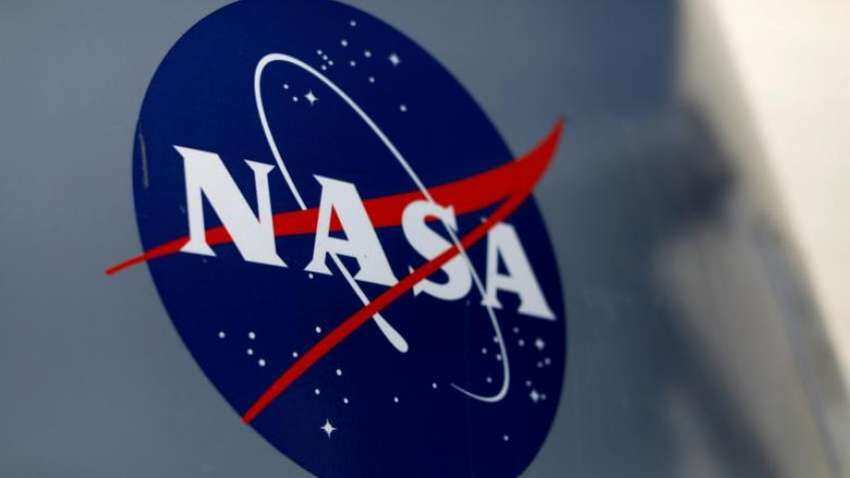NASA's OSIRIS-REx probe observes asteroid Bennu in action
NASA`s OSIRIS-REx spacecraft has observed asteroid Bennu releasing pieces of itself into space on a regular basis from a close range. A new collection of research papers, published in the Journal of Geophysical Research: Planets, provide the first in-depth look at the nature of Bennu`s particle ejection events and discuss the likely mechanisms at work that cause the asteroid to shed material

NASA`s OSIRIS-REx spacecraft has observed asteroid Bennu releasing pieces of itself into space on a regular basis from a close range. A new collection of research papers, published in the Journal of Geophysical Research: Planets, provide the first in-depth look at the nature of Bennu`s particle ejection events and discuss the likely mechanisms at work that cause the asteroid to shed material.
These findings could serve as a cornerstone for future planetary missions that seek to better characterise and understand how these small bodies behave and evolve.
The first observation of particles popping off the asteroid`s surface was made in January 2019, mere days after the spacecraft arrived at Bennu as a specialised navigation camera onboard the spacecraft took repeat images of background stars.
A University of Arizona scientist, Carl Hergenrother, one of the lead authors of the collection, pored over these images that the spacecraft had beamed back to Earth.
The images showed the asteroid silhouetted against a black sky dotted with many stars -- except there seemed to be too many.
"I was looking at the star patterns in these images and thought, `huh, I don`t remember that star cluster," Hergenrother said.
"I only noticed it because there were 200 dots of light where there should be about 10 stars. Other than that, it looked to be just a dense part of the sky."
A closer inspection and an application of image-processing techniques unearthed the mystery: the "star cluster" was in fact a cloud of tiny particles that had been ejected from the asteroid`s surface.
Follow-up observations made by the spacecraft revealed the telltale streaks typical of objects moving across the frame, setting them apart from the background stars that appear stationary due to their enormous distances.
Since arriving at the asteroid, the team has observed and tracked more than 300 particle ejection events on Bennu.
According to the authors, some particles escape into space, others briefly orbit the asteroid, and most fall back onto its surface after being launched. Ejections most often occur during Bennu`s local two-hour afternoon and evening timeframe.
During a number of observation campaigns between January and September 2019 dedicated to detecting and tracking mass ejected from the asteroid, a total of 668 particles were studied.
See Zee Business Live TV Streaming Below:
On October 20, the spacecraft will make the first attempt to grab a sample from Bennu`s surface, NASA said.
Get Latest Business News, Stock Market Updates and Videos; Check your tax outgo through Income Tax Calculator and save money through our Personal Finance coverage. Check Business Breaking News Live on Zee Business Twitter and Facebook. Subscribe on YouTube.
RECOMMENDED STORIES

IPL Auction 2025 Free Live Streaming: When and where to watch Indian Premier League 2025 mega auction live online, on TV, Mobile Apps, and Laptop?

SIP vs PPF: How much corpus you can build in 15 years by investing Rs 1.5 lakh per year? Understand through calculations

SBI Senior Citizen Latest FD Rates: What senior citizens can get on Rs 7 lakh, Rs 14 lakh, and Rs 21 lakh investments in Amrit Vrishti, 1-, 3-, and 5-year fixed deposits
08:04 PM IST








 SpaceX secures $843 million NASA contract to de-orbit ISS by 2030
SpaceX secures $843 million NASA contract to de-orbit ISS by 2030 NASA continues to further India-US iCET initiative for "benefit of humanity", says administrator Bill Nelson
NASA continues to further India-US iCET initiative for "benefit of humanity", says administrator Bill Nelson Indian-origin astronaut Sunita Williams set to fly into space for a third time on Tuesday
Indian-origin astronaut Sunita Williams set to fly into space for a third time on Tuesday China set to launch high-stakes mission to moon's 'hidden' side
China set to launch high-stakes mission to moon's 'hidden' side NASA astronauts lose tool bag during first spacewalk
NASA astronauts lose tool bag during first spacewalk